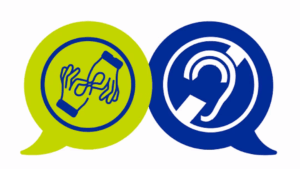The acronym, “OSHA” is familiar to most workers as it pertains to workplace safety and employee rights. As such, it may seem strange to think about how language services, could connect to any kind of job-related risk. However, often for a session in an environment where reasonable protections need to be in place its necessary the help of interpreters. Thus, employers must understand what is OSHA regulations as they apply to their usual employees and independent contractors. Also, to familiarize with these regulations to ensure they feel comfortable while on assigment to encourage interpreters. In this article, we will cover what OSHA means for any employee and employer.

OSHA Training courses
OSHA training courses are usually focused on helping employers create a non-hazardous space for all present. Given that almost all private businesses are required to comply with the Act’s guidelines, there’s something for everyone to learn. Global Arena’s course is no exception, but it goes further by considering how these issues apply to onsite interpreters. Even if you think you know everything about employment safety, a refresher to cover these finer points is always useful. The course’s modules cover a range of topics.
OSHA History
Acronym
So OSHA stands for the Occupational Safety and Health Administration and is part of the United States Department of Labor. To best understand about what is OSHA and its standards, one must first look at the separate components that make the acronym.
O: Occupational; pertaining to work and workplaces. The goal is to “assure safe and healthful working conditions for working men and women by setting and enforcing standards and by providing training, outreach, education, and assistance”.
S: Safety; OSHA exists to inspect workplaces and ensure that government standards are being upheld. The ultimate goal is to prevent workers from being seriously injured or killed while on the job.
H: Health; OSHA also includes standards to limit exposure to chemical hazards at work and offers medical testing when appropriate.
A: Administration; Congress created the Occupational Safety and Health Administration in 1970. It exists as part of the United States Department of Labor. The Department of Labor formed the Governance to enforce the standards outlined by the OSH Act.
The passing of the occupational health and safety act (OSH Act) of 1970 created OSHA. This era included rapid industrial developments in the USA. Prior to the OSH Act, industrial workers had to rely on labor unions for protection or compensation after an accident. One motivation for the law was to stem these accidents before they happened. The goal is to avoid both employee concerns and employer crisis. Richard Nixon signed the Act into law on December 29, 1970. There is a distinction between the Occupational Safety and Health Law and the Administration responsible for its application.
What is OSHA’s Purpose?
The purpose of the OSH Act is to prevent workers from being seriously injured or killed while on the job. The OSH Act sets health and safety standards to which all private sector employers and workplaces must adhere. The best way to summarize OSH Act is by using the General Duty Clause;
“29 U.S.C. § 654, 5(a)1: Each employer shall furnish to each of his employees employment and a place of employment which are free from recognized hazards that are causing or are likely to cause death or serious physical harm to his employees”.
In layman’s terms, an employer must keep their employees safe by addressing everything that could reasonably cause harm.
Note that there are exceptions to the rules; some family businesses and government entities are not required to be compliant. Furthermore, there are several cases where independent contractors and other non-employee workers aren’t protected. However, other laws usually cover these cases. Regardless, it’s wise to follow OSHA guidelines of your own volition. The guidelines are comprehensive standards created to be mutually beneficial to employees and employers. An ideal workplace is a safe workplace.
Employer and Employee Obligations;
Everyone in a company has a level of authority to pay attention to the workspace, watching out for possible hazards. As an employee, one must document issues as they’re found and bring them to the attention of managers. Managers and other heads must then instantly try to rectify any situation that causes employees risk or unease. Given OSHA’s industrial heritage, one goal of this process is to vertically build trust through open conversation and mutual respect. If employees feel that their needs are not being met or even addressed, it aggravates any accident that might occur.
The following list of Employer/Employee obligations gives an overview of OSHA guidelines for the general workplace. “A general workplace” means a workplace with no specific or unusual industrial hazards. General workplaces include offices, schools, retail businesses, non-chemical fabrication plants, and the like. A general workplace includes both “highly-skilled” employees and support staff. Support staff often lack the specialized training of their “highly-skilled” counterparts and are thus in need of extra protection measures.
Guidelines for the General Workplace;
- Chemical hazards; Employers must inform workers about chemical hazards and minimize risk. Employers can accomplish this through proper labeling, training, alarms, color-coded systems, chemical information sheets and other methods.
- Language; All safety and training must happen in a language and with cognition that workers can easily understand.
- Records; The employer must keep records of all work-related injuries and illnesses.
- Testing; The employer must perform regular health testing, such as air sampling, in the workplace.
- Protective Equipment; Employers must provide personal protective equipment to their employees at no cost.
- Medical Tests; Some employment fields must provide hearing or other medical tests at no cost to their employees. This is dependent on OSH Act standards.
- Access to Information; Employers must post OSHA citations as well as annual workplace illness and injury summary data. They must also post the official “OSHA Job Safety and Health – It’s the Law” poster where employees can see it.
- Non-retaliation; Employers may not retaliate or distinguish against a worker who uses their rights to report a workplace-related illness or injury.
Worker Rights;
As well as regulating employer standards, OSHA also protects and establishes employee rights in the workplace. This is vital to understanding OSHA and the OSH Act and is key to applying OSHA standards to daily life. OSHA and the OSH Act protect workers as well as employers, making the Act a radical piece of legislation. For all of American history prior to the Act, workers were commonly treated as expendable. Especially in factories and other mass industry facilities, worker safety was secondary to profit.
The 1960s introduced a growing awareness of how industrial chemicals impacted the environment and, especially, the workers exposed to them. On January 28, 1968, President Lyndon B Johnson introduced a bill designed to protect workers from these effects. Regrettably, they rejected this precursor bill to the OSH Act as “too strict”. Businesses were annoying with the “mandatory” nature of the guidelines. Economists theorized that if put into law, the bill would slow the economy to a stopping point.
Richard Nixon proposed new legislation; bills that would later become the OSH act and lead to the formation of OSHA. These 1969 bills suggested that workplace safety conditions be advisory rather than mandatory. The bills offered an opening for stricter legislation proposals (similar to Johnson’s bill of the previous year). Finally passed and signed into law, the stricter bills.
Empowered workers are safe workers and knowing your rights as an employee is paramount in creating a safe workplace. Worker rights and employer obligations work hand in hand to ensure the best possible environment for all.
Worker Rights in the General Workplace;
- Conditions; Workers have the right to workplace conditions that do not pose a risk of serious harm.
- Confidence; Workers may file a confidential complaint or report to OSHA to have their workplace inspected.
- Training; Workers must receive information and training about hazards, harm-prevention methods, and OSH Act standards that apply to their workplace. The training and information must be in a language and vocabulary that workers can easily understand.
- Records; Workers have the right to receive copies of any health testing done in their workplace. This includes monitoring to find and measure hazards as well as reports of work-related illnesses and injuries.
- Participate; Workers may participate in an OSHA inspection and speak in private with the inspector.
- File a complaint; Workers have the right to file a complaint with OSHA. If they are subject to retaliation or favoritism for requesting an inspection this also applies. Workers may file a complaint for favoritism following the use of any of their other rights under the OSH Act. Workers also have the right to act as “whistleblowers” under the 21 additional federal laws for which OSHA has jurisdiction.
Who must adhere with OSHA standards?
OSHA standards apply to most private sector businesses in the United States with more than ten employees. The standards also apply to some public sector employers and workers. However, there are a few notable exceptions;
- Self-employed people.
- Farms that only employ immediate family members.
- People who employ others for domestic services, such as childcare or housekeeping.
- Churches and religious activities.
- Business which governs federal agencies.
States are encouraged to develop their own job safety and health standards that are comparable to OSHA standards. The goal is that states create standards that are at least effective as OSHA regulation at the federal level.
Workers for whom OSHA standards technically don’t apply still have resources in the Governance. These workers have the right to make complaints and reports to their federal OSHA regional chief if they deem it necessary. When a non-covered worker makes such a complaint, the OSHA regional office determines the necessary follow-up steps. There’s no guarantee of an official inspection but a follow-up with the Department of Labor is possible.
OSHA Regulations covers Independent Contractors?
Employee v. Independent Contractor
The General Duty Clause specifies terms such as “each employer” and “each employee”. However, an independent contractor isn’t an “employee,” as such. Independent Contractors aren’t taxed in the same way as “employees” and “employers” have different obligations regarding their safety and care. OSHA does state legal definitions for “employer” and “employee” on their website, www.osha.gov;
- “The term ‘employer’ is defined as a person engaged in a business affecting commerce who has employees, but does not include the United States (not including the United States Postal Service) or any State or political subdivision of a State”.
- “The term ‘employee’ is defined as an employee of an employer who is employed in a business of [the] employer which affects commerce”.
Working interpreters are often considered independent contractors, rather than employees. Therefore, it can be difficult to tell if they’re covered by OSHA regulations. The OSH Act is written in such a way that it allows courts to decide what constitutes an “employee”. Regardless, having a safe environment for all actors involved in any professional activity or scenario is an absolute necessity.
Common Law vs. Economic Reality
Courts determine whether an individual is an employee or an independent contractor with standard tests; Common Law and Economic Reality. Common Law is forthright. The Social Security Governance defines it thus;
“The common law control test is the basic test, using the common law rules, for determining whether a relationship exists between the worker and the person or firm that they work for. Under the common-law test, the employer has the right to tell the employee what to do, how, when, and where to do the job”.
The Economic Reality test uses six questions to determine whether a worker is an employee or an independent contractor;
- Is the worker’s work an everyday part of the paying party’s business? If the worker (in this case, interpreter) provides a service used every day, it’s a strong argument for employee treatment.
- Who owns the tools used in the work?; “Tools” has a broad definition; the term “tool” constitutes anything used during the work session. Interpreters often bring their own “tools;” dictionaries, notepads, pens, etc. This is an argument for treating an interpreter as an Independent Contractor, rather than as an employee.
- Does the worker face a risk of loss or chance of profit while doing the work?; Independent contractors assume risk and chances associated with individual jobs. Employees receive the same pay regardless of the job outcome.
- Does the work require specialized knowledge and/or skill?; Independent contractors generally have specialized field knowledge and/or skills. This is often irrelevant for employees.
- Is the work contracted on a project by project basis or is there a more permanent relationship; Employees are typically considered “permanent staff;” independent contractors are more transient.
- Who controls the work processes?; If a manager can dictate the work processes used, the people completing the project are most likely employees. Independent contractors have greater leeway in deciding how to achieve an outcome.
Courts typically use a combination of both methods to determine if a worker is an independent contractor or an employee.
It cover Interpreters?
As discussed, OSHA protects only employees and not independent contractors. However, the role of the interpreter is highly varied; often, an interpreter is, in fact, an employee. Interpreters working for one entity, such as a hospital or a school, with a steady job are typically employees. OSHA standards don’t cover an interpreter who works with an agency and which is usually and independent contractor.
Personal safety is still a must, even though technically Osha don’t cover interpreters working as independent contractors. All interpreters should be cognizant of their surroundings and potential threats to their safety. If in question, immediately report an event or potentially unsafe environment to your supervisor or interpreting manager.
OSHA Goals;
Data collection and Results
One of the aims of OSHA is to collect data to better identify workplace hazards and create statistics. These statistics can inspire and form injury and illness prevention programs. In 2019, OSHA determined that the top ten most commonly violated standards pertained to;
- Fall protection, construction.
- Hazard connection standard, general industry.
- Scaffolding, general requisites.
- Control of hazardous energy (lockout/tagout), general industry.
- Inhaling protection, general.
- Ladders, construction.
- Powered industrial trucks, general industry.
- Fall Protection–Training Demands.
- Machinery and Machine Guarding, general demands.
- Eye and Face Protection.
Through data tracking and the creation and enforcement of OSHA standards, worker deaths are down. The change is (on average) from about 38 worker deaths/day in 1970 to 14/day in 2017. Worker injuries and illnesses are down from 10.9 incidents per 100 workers in 1972 to 2.8 per 100 in 2017.
Inspections
OSHA also conducts regular inspections. These inspections ensure that covered institutions meet or exceed OSHA safety standards. Inspection priorities include;
- Imminent danger situations; hazards that could cause death or serious physical harm.
- Severe injuries and illnesses; employers must report work-related fatalities within 8 hours and work-related inpatient health insurance, amputations, or losses of an eye within 24 hours.
- Worker complaints; allegations of hazards or violations.
- Referrals of hazards from other federal, state, or local agencies, individuals, institutions, and the media.
- Targeted inspections; inspections aimed at specific, high-hazard industries or individual workplaces that have received high rates of injuries or illnesses.
- Follow ups; checks for abatement of past violation areas.
Inspection Processes;
Managers should arrange for regularly scheduled visits by OSHA inspectors to verify that their workplaces are performing their due diligence. Many businesses, even seemingly low-risk offices, have OSHA guidelines and a record of compliance posted somewhere for employees to see. An important component here is awareness; everyone should know the rules, what they entail, and how to follow them. Knowing the inspection process will help you navigate an inspection. Keep in mind that the easiest way to pass is to follow the rules in the first place.
Preparing for an Occupational Safety and Health Administration Inspection;
The best preparation for an OSHA inspection is to be constantly vigilant about health and safety hazards in your workplace.
Here are a couple of tips to prepare for a successful inspection;
- Keep a copy of the complete set of OSHA standards for reference; Take time to review specific situations covered by the standards that could apply to your workplace.
- Keep copies of all industry guides and literature; Have the necessary guides accessible at all times to be sure that your equipment is working within established parameters.
- Organize a continuing effort to minimize risk; Encourage employees to actively report potentially hazardous situations. This doesn’t have to naturally pertain to OSHA standards but just with common sense and an eye to safety.
- Establish a safety director; This safety director should be no more than “two steps” away from the main authority at a site.
- Know your rights; You can always ask an OSHA inspector to postpone an inspection if they arrive at an inconvenient time. The company itself defines during a delivery time as an “inopportune time”. Keep in mind that the inspector may still want to see files or take a quick look at the workspace. This is within their rights, even if they’re willing to delay the walk around.
Inspection Procedure;
- Preparation; A compliance officer reads through the past inspection reports and compile a list of the standards to apply. They also gather the appropriate protective equipment and testing instruments.
- Credential Presentation; The OSHA compliance officer arrives at the inspection site and shows the appropriate party their credentials. This includes a photo ID and a serial number.
- Opening Conference; The compliance officer discusses the scope of their inspection; areas of inspection, walkaround procedures, employee content, and employee interviews. An authorized employee model also has the right to accompany the OSHA inspector. The compliance officer will consult privately with a equitable number of employees.
- Walkaround; The OSHA compliance office walks through portions of the workplace, looking for code violations. They take note of anything that could lead to employee injury and illness. The compliance officer may point out hazards as they see them so that they can be corrected immediately. While they’ll still be cited, the correction is a show of good faith on the part of the employer. Compliance officers try to minimize workday disruption and keep any trade secrets they observe confidential.
- Closing Conference; After the walkaround, the OSHA compliance officer discusses their findings with the employer and employee model. They’ll also list possible courses of action and outline how to contest the results if necessary.
OSHA Violations;
Despite employers’ best efforts, violations—lacking protection from a hazard, a developing structural problem in the office—sometimes sneak through. When this happens, it is incumbent upon anyone who observes the violation to instantly report it to their manager. All employees at all levels must understood OSHA strick reporting and risk mitigation procedures. The easiest way to fail an inspection is to neglect the OSHA Preparation steps when problems arise.
So, as an employer, you may still be wondering; where do interpreters fit in?
If you employ interpreters on a construction site or in an industrial plant, OSHA standards are clearly relevant. Interpreters should be cognizant of possible risks or violations, obvious or otherwise, in any workspace. It’s also perceivable to need interpreters during a company-wide OSHA training, for businesses that employ limited English-speaking people. In this case, the interpreter receives the benefit of the training while interpreting for their colleagues.
Including interpreters in your company OSHA trainings fulfills your employer obligations under “language”. When a company schedules a session about how to handle inspections and violations, everyone should be able to understand everything. If you’re an interpreter, knowing the finer points of the regulation can help you better express this information to others. Unfornately, there are also moments like after an accident or an injury where it is necessary a legal interpeter. Having an understanding of OSHA regulations in the courtroom is highly beneficial for such cases.
It’s difficult to understate the benefits of this more nuanced understanding. “Workplaces must be safe,” is the single, simple principle that sums up OSHA compliance. As businesses are legally held to a certain standard of risk management; everyone within them should be aware of that standard. By completing an OSHA training module, you can rest assured that you have the requisite knowledge to handle risky situations.




